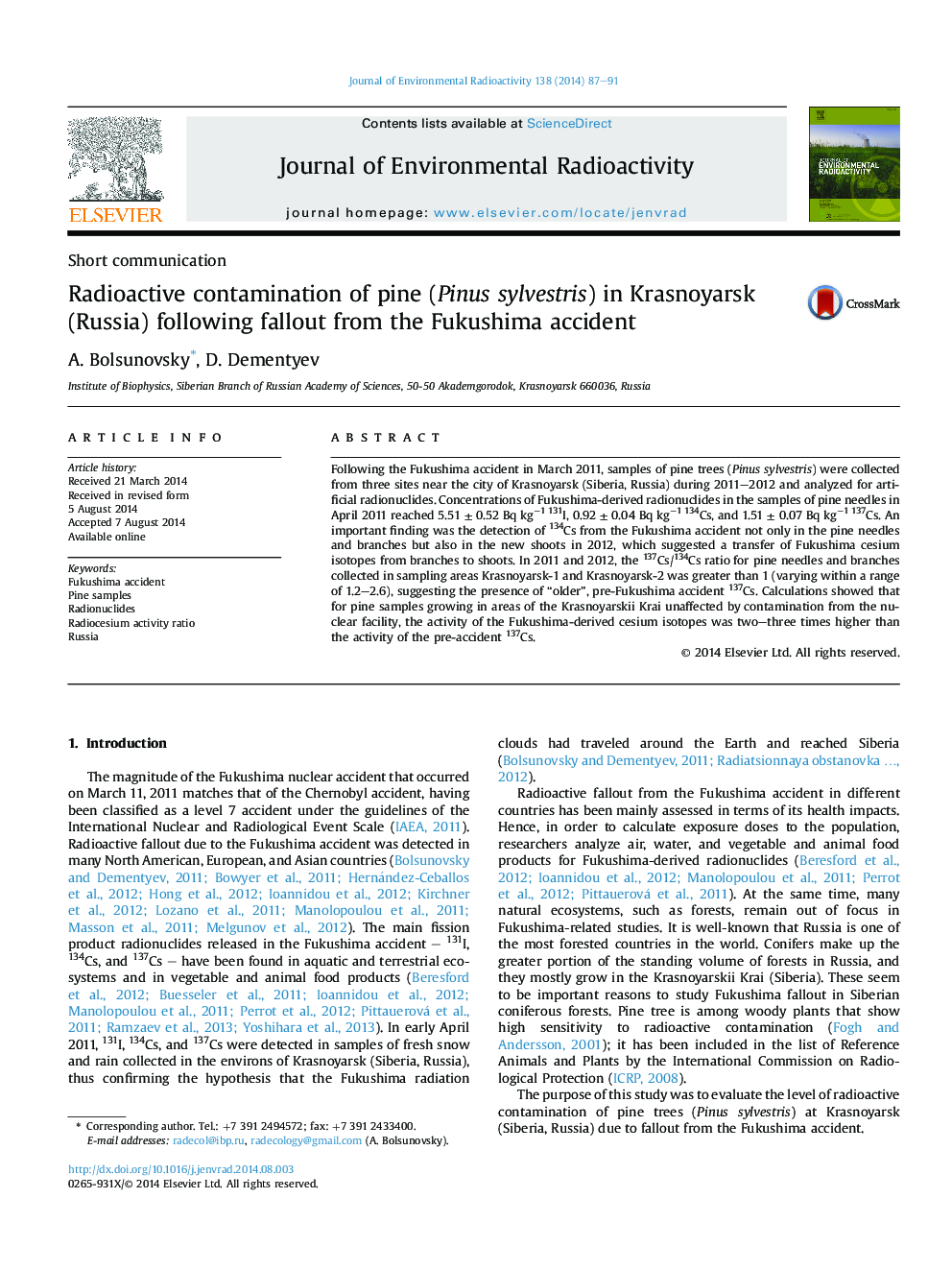| Article ID | Journal | Published Year | Pages | File Type |
|---|---|---|---|---|
| 8082735 | Journal of Environmental Radioactivity | 2014 | 5 Pages |
Abstract
Following the Fukushima accident in March 2011, samples of pine trees (Pinus sylvestris) were collected from three sites near the city of Krasnoyarsk (Siberia, Russia) during 2011-2012 and analyzed for artificial radionuclides. Concentrations of Fukushima-derived radionuclides in the samples of pine needles in April 2011 reached 5.51 ± 0.52 Bq kgâ1131I, 0.92 ± 0.04 Bq kgâ1134Cs, and 1.51 ± 0.07 Bq kgâ1137Cs. An important finding was the detection of 134Cs from the Fukushima accident not only in the pine needles and branches but also in the new shoots in 2012, which suggested a transfer of Fukushima cesium isotopes from branches to shoots. In 2011 and 2012, the 137Cs/134Cs ratio for pine needles and branches collected in sampling areas Krasnoyarsk-1 and Krasnoyarsk-2 was greater than 1 (varying within a range of 1.2-2.6), suggesting the presence of “older”, pre-Fukushima accident 137Cs. Calculations showed that for pine samples growing in areas of the Krasnoyarskii Krai unaffected by contamination from the nuclear facility, the activity of the Fukushima-derived cesium isotopes was two-three times higher than the activity of the pre-accident 137Cs.
Related Topics
Physical Sciences and Engineering
Energy
Nuclear Energy and Engineering
Authors
A. Bolsunovsky, D. Dementyev,
